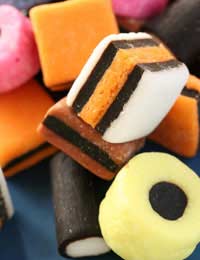The Rise of Natural Colours

The colours used in food and drink products used to predominantly come from synthetic sources. But with continued interested in the effect that E numbers may have on health, many manufacturers are turning to natural colours and exploring the way they could be used in popular products.
Synthetic or artificial colours used to be the product of choice for use in foods and drinks, not least because they were cheap, and have been widely use in an array of products over the years. But research into the use of artificial colours has slowly been attributing various health problems to use of the colours, especially in children’s foods and drinks, and consumer awareness into the link between diet and health are much more of a concern then they used to be.
All things natural are making a big come-back at the moment – and that includes the use of natural colours. New government legislation regarding the labelling of colours used in foods is coming into force in 2009 and, as a result of a study into the effect of artificial food colourings on children, many of the major manufacturers have been busy searching for natural alternatives to use as a replacement for synthetic colours.
How Are Natural Colours Sourced?
In 2005, major food manufacturer Nestle Rowntree vowed to remove all artificial colourings from their products and replace artificial colours with natural colours. They were faced with an initial problem, namely the famous blue Smarties, as they contained E133, or brilliant blue. Initially, there was no natural colouring replacement available, so they were forced to remove the blue Smarties from the tubes and instead put white Smarties in.It was never quite the same for consumers, but Nestle Rowntree were busy trying to discover a suitable natural blue colouring that they could use. Eventually they hit in Spirulina – which comes from blue-green lake algae. It might not sound that appetising, but it’s already widely acclaimed as a dietary supplement and actually contains high levels of protein too. Its colour was vital and it produced a good enough natural shade of blue for Smarties to be coloured, and the blue Smartie returned.
The Smarties tale illustrates the lengths some manufacturers are prepared to go to when investigating natural colours, but also shows how some artificial colours – which are unnaturally bright and colourful – are a bit tricky to replace with natural substances.
As well as the issue with colour and look, there’s also the problem that natural substances sometimes react differently to artificial ones, thus upsetting other ingredients in tried and tested recipes. Plus there are issues with supply too, as they may be more liable to be in short supply at unexpected times, compared to artificial colours. For example, if they come from natural foods, then crops may be affected by poor weather conditions, which in turn might limit the amount of natural sources available.
Examples of Natural Colours and How They’re Being Used
Apart from the use of Spirulina to create a wonderful blue hue, there are various other natural sources being used to create a rainbow of colours. Some of the more recent natural colours to hit the manufacturing world include:- Natural hibiscus extract - creates a red colour. It’s being used in some beverages.
- Purple sweet potato – creates a purple red colour. It’s being used in beverages, sauces, dressings and more.
- Prickly pear juice – creates a natural red colour. It’s being used in soft drinks and yogurts.
In fact, according to experts, synthetic colours currently account for 40% of the colourings market, whereas natural colours now make up 31% - quite a turnaround from how it’s been in the past and a good omen for the future.


Re: Dangers and Side Effects of E Numbers
Is this the tip of the iceberg? Can't help thinking we all being slowly poisoned by convenience food. Convenient for…
Re: E200 - E299 Preservatives
Hallo I need advise on what preservetives and ant foaming agents to use for lemon juice. Also reconmondations on how much powders to…
Re: Top E Numbers to Avoid
Since Brexit, I have been adding a few extra E numbers in my products and my sales have boomed! I now sell the tastiest burger in town. E…
Re: E Numbers Not Suitable for a Halal Diet
Is E202 is halal?
Re: Does E631 Use Extracted Pig's Fat or Sardine Oil?
400
Re: E Numbers Not Suitable for a Halal Diet
E140 is a plant product, not derived from meat at all. Please check your facts.
Re: Top E Numbers to Avoid
I was prescribed amitriptyline for anxiety and got on well with the first box of tablets. After starting the second box I began to feel…
Re: E400 - E499 Thickeners, Stabilisers and Emulsifiers
All thickener agent name All emulsifier agents name Cemical use Food use
Re: Top E Numbers to Avoid
You say that E133 is banned in Germany, yet my GP has prescribed Fultium-D/Colecalciferol 800 out capsules with E133 and the Manufacturer…
Re: Does E631 Use Extracted Pig's Fat or Sardine Oil?
In India, there is a law already existing, that any food products having any non-vegetarian ingredients…